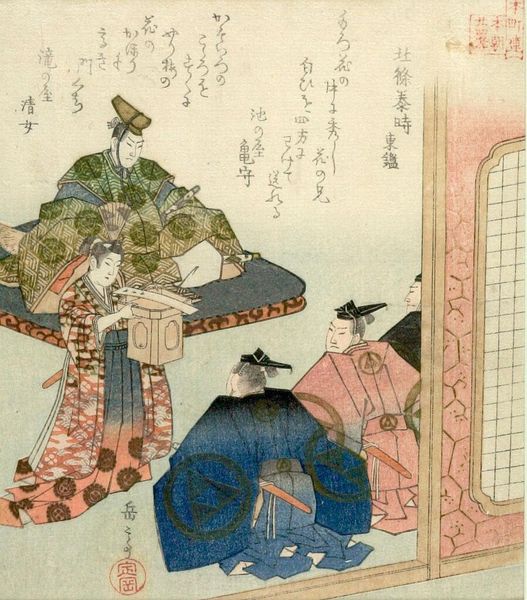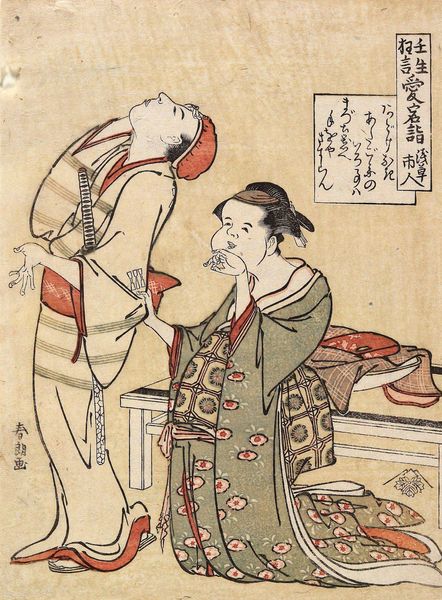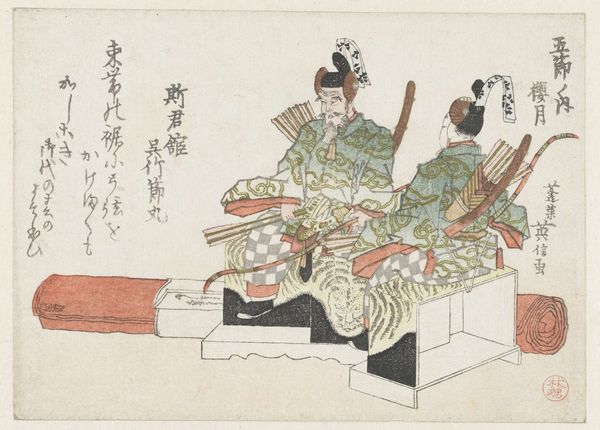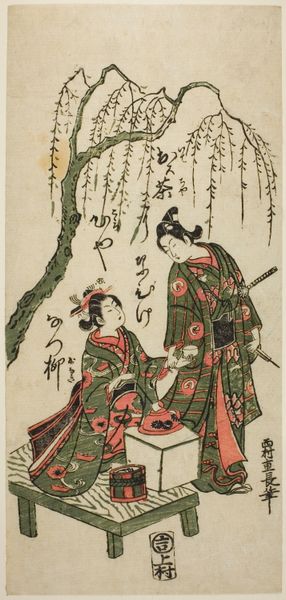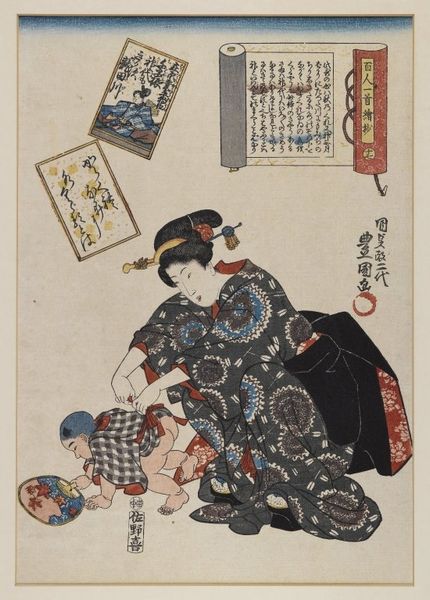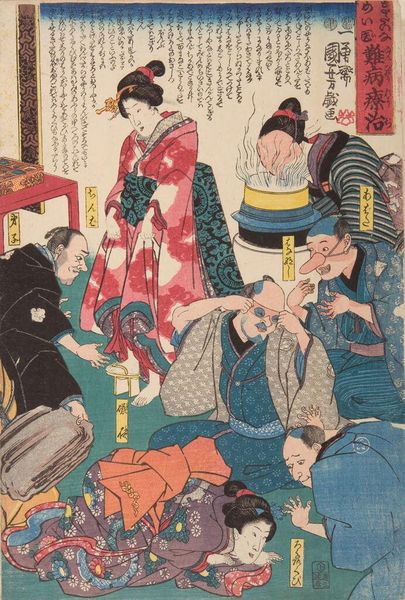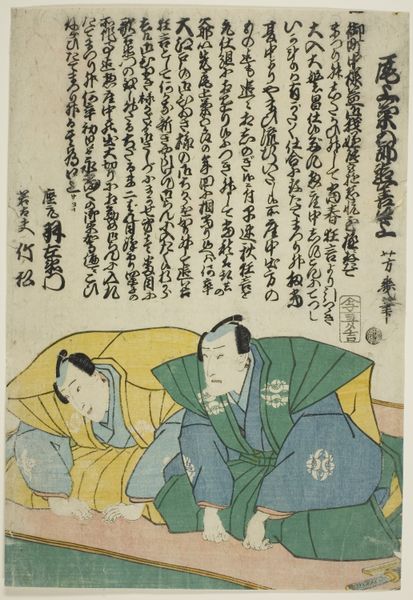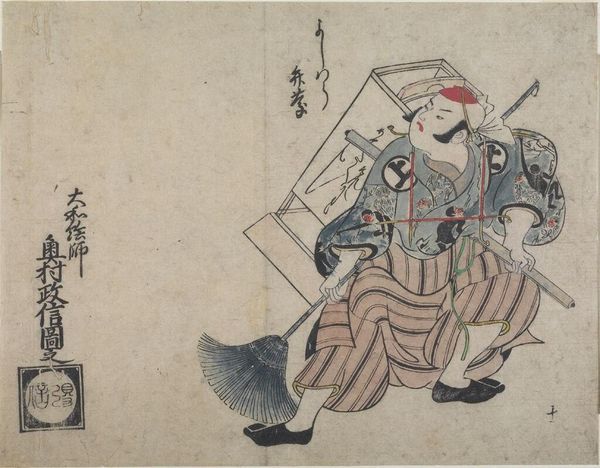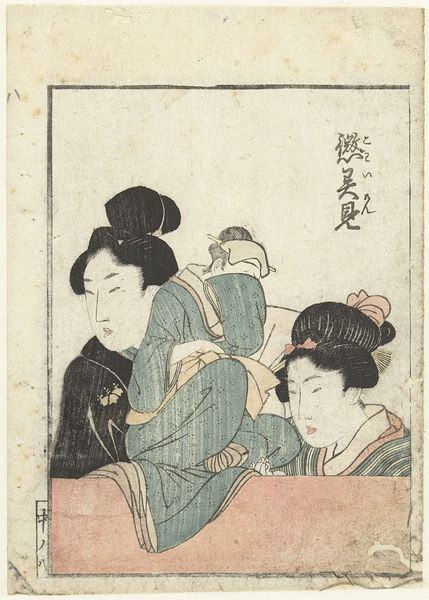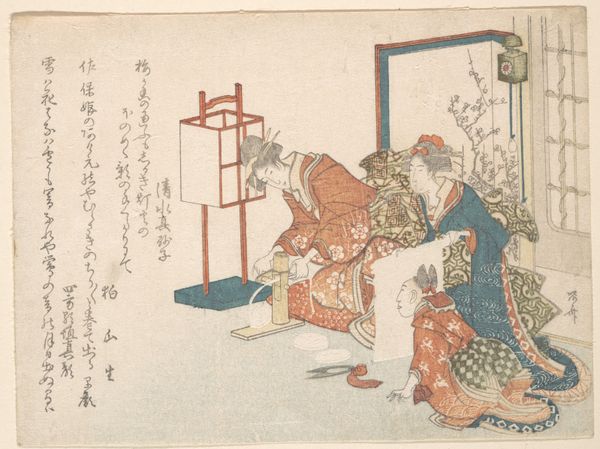
Copyright: Public Domain: Artvee
Curator: Before us is Tsukioka Yoshitoshi’s 1882 print, titled "Sorori Shinzaemon and Hideyoshi." Editor: It’s a compelling image; a study in contrasting posture and status, instantly evoking deference. Curator: Precisely. Observe how Yoshitoshi masterfully employs line and color in this woodcut and watercolor print to signify social hierarchy. The central figure, presumably Hideyoshi, reclines on an ornate cushion, his robes rendered in vibrant greens and purples, while the other figure bows low. Editor: The very materials contribute to that hierarchical reading. It’s clear that immense labor was required for the patterned clothing of Hideyoshi as opposed to Sorori’s humbler kimono. And what does that color signify in terms of accessing pigments and dyes in 19th-century Japan? Curator: Good points. Consider also the compositional structure: the deliberate placement of the figures in relation to each other creates a clear power dynamic, the one reclined holding the tools and symbols of statecraft, namely the closed fan, with the petitioner reaching upward toward him, but with the distance between them acting as a structural barrier. The visual semiotics speak volumes. Editor: And the print medium itself adds layers of meaning. It makes a statement to make such work available to a potentially broader audience through this reproducible means, to reinforce ideas and narratives of status and societal hierarchy in daily life. The choices inherent to production amplify the core meaning itself. Curator: The choice of colors, while appearing simple at first glance, is highly refined. The bold reds and greens command our attention. In that sense, Yoshitoshi evokes the symbolic potential of each component of the print. Editor: Examining the print through the lens of labor and dissemination, we start to understand how traditional artistic materials and approaches, like watercolor and woodcut printing, serve a deliberate purpose in shaping society's perception of social roles. Curator: I concur. This piece offers rich potential for future exploration when examining power dynamics inherent within its compositional and technical approach. Editor: Indeed, it speaks to the broader societal forces that are manifest in what some may think of a "simple" image, a window to complex systems.
Comments
No comments
Be the first to comment and join the conversation on the ultimate creative platform.
